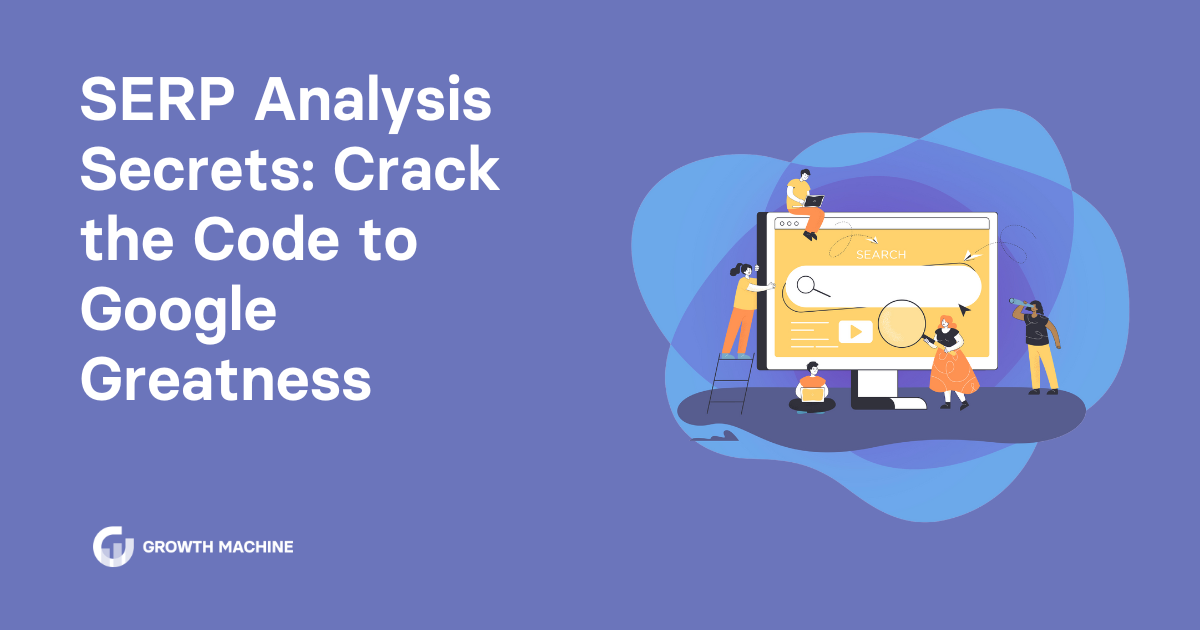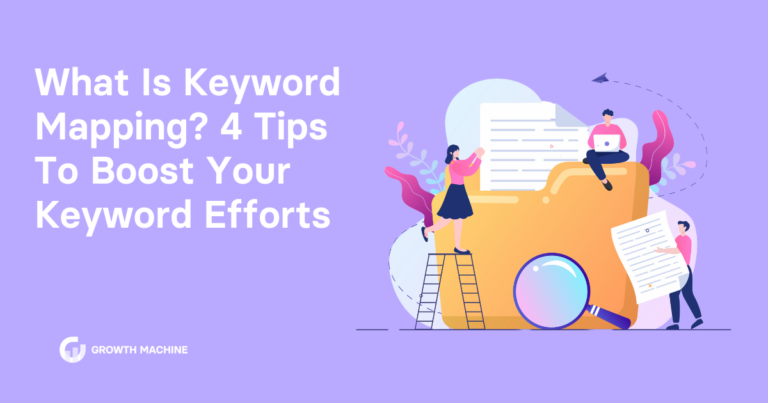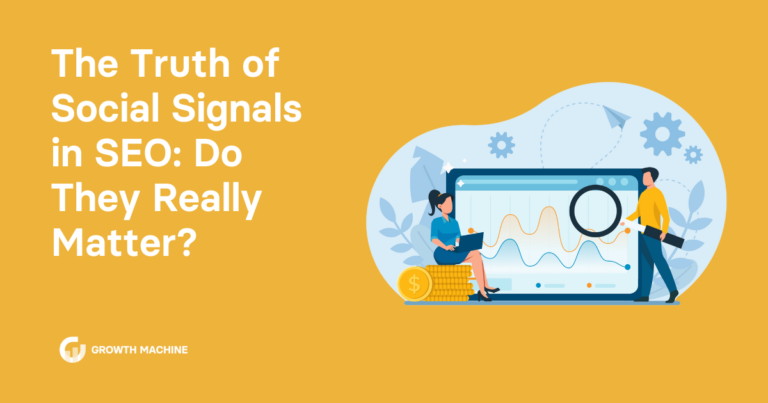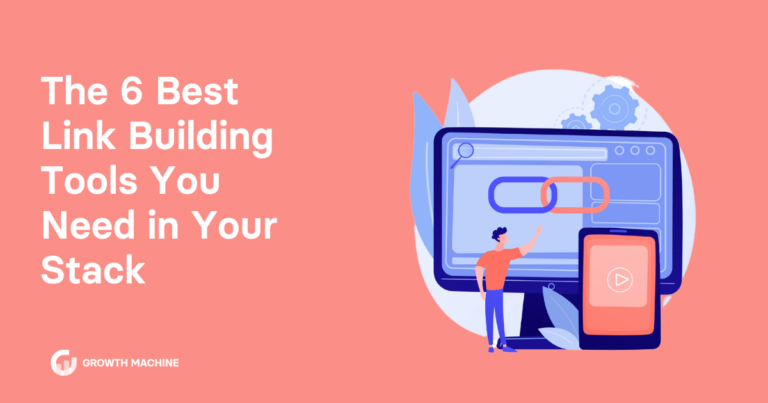SERP Analysis Secrets: Crack the Code to Google Greatness
Have you ever wondered how search engines decide which websites are on top and which ones, well, flop? Search engines consider a lot of factors to determine where your website lands for a given query on the search engine results pages (SERPs).
But maybe you’ve gained traction in the SERPs, only to lose steam after a search engine update. Or you’re trying to get ahead, but just can’t seem to crack the code of what Google is looking for.
That’s where SERP analysis comes in. This process helps you uncover helpful insights behind everything from search intent to competitors’ content, helping you dissect which factors drive top-ranking pages.
Search engine optimization (SEO) is an ongoing process that requires almost constantly reviewing what you know about SERP rankings. Ranking rules are changing a lot this year, so it’s crucial to understand the SERP analysis process and how it can boost your rankings for less hassle.
In this guide, we’ll explore how the evolving Google SERP rules are changing the game and share actionable tips to help you stay competitive.
What Is SERP Analysis and Why Does It Matter?
SERP analysis is a process you go through to understand search engine results pages and their rankings. You look at factors like search intent, number-one SERP features such as featured snippets, and the performance of top-ranking pages for a specific keyword or search query.
SERP analysis is crucial for so many reasons, including:
- Create better content: Whether it’s search engine bots or your audience, everybody loves quality content. Instead of spinning your wheels, you can use the insights from SERP analysis to spend your time creating content strategies that get results. That’s a win for everyone!
- Boost search traffic: Ultimately, the goal of SEO is to bring more interested potential customers to your site. Understanding SERP ranking factors guides your efforts and helps you maximize organic traffic.
- Save time and money: Stop spending so much time wondering which page layouts or content formats your audience prefers. SERP analysis helps you understand the competitive landscape, search engine requirements, and user expectations. This information is crucial for making the most of your time and budget, ensuring you only invest in SEO strategies that move the needle.
Think of SERP analysis as a type of SEO detective work. Search engines hold their cards close to their chest, so they’re not likely to give away their secrets any time soon. But with SERP analysis, you better understand your place in the ranking algorithm, increasing your chances of ranking in top positions.
You don’t need to be an SEO expert to do this, either. There are plenty of SEO tools and SERP checkers out there to break down the process and give you access to juicy data on domain authority, backlink profiles, page authority, and more.
5 Ways SERP Analysis Has Changed — and What You Can Do About It
Long gone are the simple days of SEO when sprinkling a few keywords would land you on page one of the SERP. SERPs are changing a lot, thanks to algorithm changes, the rise of new SERP features, and users’ ever-changing expectations.
Even if you have a solid SEO game plan in place, you still need to adapt your processes to align with today’s search engines. Follow these tips to navigate this tricky environment and claim your rightful place in the SERP’s top results.
1. Fancy New SERP Features
You’ve probably noticed some additions to the SERPs in your recent Google searches that weren’t there previously. In an effort to save time for its users, Google now has fancy new SERP features like:
- Featured snippets: Featured snippets display above organic search results. They give a quick answer to search queries without the users needing to click on a link.
- Rich snippets: Rich snippets extract additional information from your website’s schema markup (a fancy way of saying structured data and content). These could be ratings, prices, availability, or other visually appealing elements that stand out from standard snippets. For example, a search for “best beauty products for oily skin” would display a list of products alongside star ratings and reviews—all in a single view. The great thing about rich snippets is that they can persuade users to click through to your site for more information.
- People Also Ask: Also known as PAA, People Also Ask is a series of expandable boxes on the SERP with questions related to the original query. Clicking on a question reveals a brief answer, often pulled from another website. Answering common PAAs in your content increases your odds of showing up as an answer on the SERP.
These features are great for users, but they’re not so great for businesses. After all, if people get the information they need directly from Google, they don’t have much of a reason to visit your website.
First things first, you need to optimize your website so it stands a chance of ranking for these SERP features. That means using schema markup language and investing in on-page optimization to claim these high-visibility areas.
If you want folks to click through to your site, now they need a really compelling reason. Go beyond simply providing an answer to a question; provide value they can’t get from Google, like exclusive access to a community, discount codes, or other tempting perks.
2. Local SEO Dominates Listings
Most searchers want hyper-relevant results based on their location. That’s good news if you have a local business, which increases your chances of landing on local SERP results. Instead of competing with every provider on the internet, you compete on a local scale instead, targeting more users in your area who are more likely to become customers, anyway.
If you haven’t already, start optimizing your website for local search. Optimize landing pages for relevant keywords targeting locals, update your Google Business Profile, and use a SERP analysis tool to track search rankings.
3. Intent Before Everything
Search intent can feel like a tough nut to crack, but it’s the foundation of successful SEO. Search engines ultimately want to match up a user’s needs with relevant content that will solve their problem.
SERP analysis should look at how well your site delivers on user intent. There are three types of intent:
- Navigational: When people have navigational intent, they’re looking for a specific website, brand, or page. Ensure your webpages are easy to navigate and include branded terms. A strong backlink profile and high page authority also help.
- Transactional: Folks with transactional intent are ready to buy. Their searches usually include terms like “reviews for [product]” or “best price.” Target these searches by creating conversion-focused landing pages with clear CTAs and high-quality images. If you aren’t sure which terms to target, use tools like Semrush and Moz to find keywords with transactional intent.
- Informational: The bulk of SEO content creation caters to informational searches, where people want answers to a specific question. These target keywords often begin with “how to,” “what is,” or “why.” Create the most in-depth and helpful content possible for these users.
Evaluate your past content and any upcoming content plans to see how well you deliver on the three types of intent. Whether users are navigating, shopping, or learning, your content should provide the most relevant and actionable type of content to meet their needs.
4. Enhancing SERPs With Visual Elements
Sure, SERPs are still heavily text-based, but that’s starting to change. In fact, did you know that optimizing for Google Images can help you gain an easy foothold for a particular keyword?
Search engines want to share quality information. A picture tells a thousand words, so it’s not unusual for Google to highlight image searches that answer a search query.
Search engines often highlight images like infographics, annotated screenshots, or clear explainers. While you should definitely invest in high-quality content, don’t neglect your website visuals.
Work with a graphic designer to convert your awesome content into digestible (and rankable) visual elements. Always give images a descriptive file name and alt text, which helps search engines rank images.
5. Reputation-Building via Backlinks
You get a backlink every time another website links to yours. In the early days of SEO, the quality of these links didn’t matter. That resulted in a bloat of unhelpful and downright spammy links that hurt the user experience.
Today, things are much different. Google analyzes the quality of the websites linking to yours and judges your website based on the link quality.
It takes time to build a backlink profile, but it’s worth the payoff. Focus on earning high-quality backlinks through content marketing, social media, and competitor analysis. Use a rank tracker to monitor how these efforts affect your search rankings.
Outrank, Optimize, and Own the SERP
Google isn’t revealing its ranking secrets anytime soon, but that doesn’t mean you have to fly blind. SERP analysis can help you refine your SEO strategy to steadily rise through the search rankings.
Even if you have solid SEO rankings today, a single algorithm update could change that overnight. Follow the tips in this guide to stay ahead of algorithm changes by proactively prioritizing high-quality user experiences. Ready to turn your SERP analysis into a traffic-driving powerhouse? At Growth Machine, we specialize in crafting SEO strategies that don’t just get you on the search engine results page—they can get you to the top. Contact Growth Machine now to optimize your search rankings.







